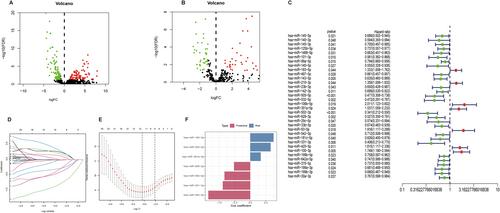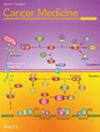Identification and Experimental Validation of Prognostic miRNA Signature and Ferroptosis-Related Key Genes in Cervical Squamous Cell Carcinoma
Abstract
Objectives
This study aimed to investigate the prognostic value of miRNAs and ferroptosis-related genes in cervical squamous cell carcinoma.
Methods
We mined data from public databases for differentially expressed miRNAs, ferroptosis-related genes, and clinical parameters and constructed a prognostic risk model. The predictive performance of the model was evaluated using survival and receiver operating characteristic curve analyses. We combined the clinicopathological features to construct a nomogram and evaluated its efficacy using calibration and clinical decision curves. The correlation between miRNA characteristics, risk score, and the tumor microenvironment was also studied. Next, consensus and key genes were screened, and their biological functions were analyzed using KEGG, GO, GSEA, and drug sensitivity analysis. Finally, the expression of miRNAs and key genes was detected using qRT-PCR and western blotting to verify the prediction results.
Results
Seven miRNA signatures (miR-100-3p, miR-301a-5p, miR-331-3p, miR-425-5p, miR-502-3p, miR-505-5p, and miR-629-3p) were generated, and prognostic risk and nomogram models were successfully constructed. These models exhibited good accuracy. miRNA signatures correlated with the tumor microenvironment. Twelve consensus genes and three key genes (SLC2A1, ANO6, and TXNIP) were screened and their biofunctional diversity was identified using various analytical methods. qRT-PCR and western blotting were used to verify the expression of miR-301a-5p, miR-505-5p, SLC2A1, and TXNIP in cervical squamous carcinoma. The results were consistent with those of bioinformatics analyses.
Conclusions
Seven miRNAs may serve as prognostic biomarkers of cervical squamous cell carcinoma. SLC2A1, ANO6, and TXNIP are associated with cervical squamous cell carcinoma and may serve as ferroptosis-related markers of the disease.


 求助内容:
求助内容: 应助结果提醒方式:
应助结果提醒方式:


